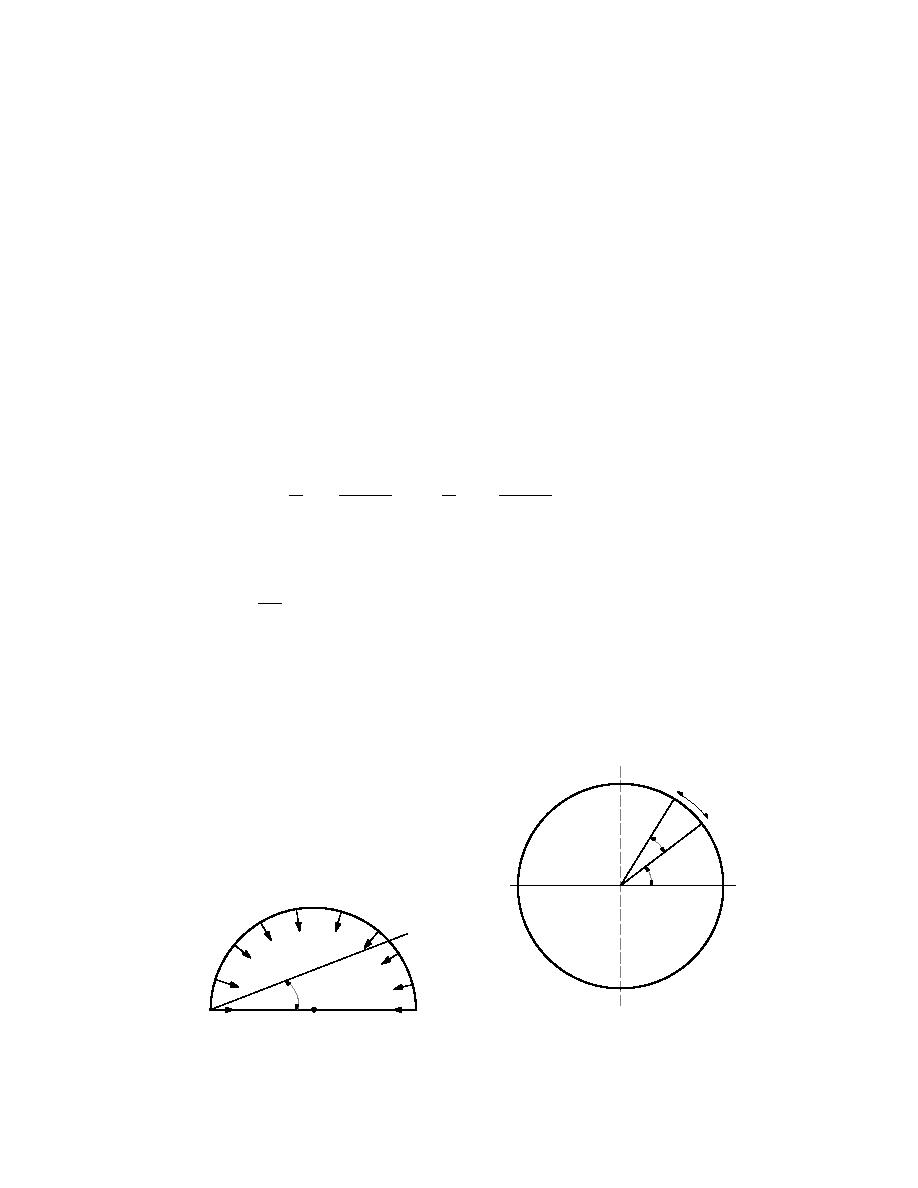
APPENDIX B: SKY DIFFUSE SOLAR RADIATION FLUX TO A
HORIZONTAL CYLINDER
Sky diffuse radiation under an overcast that would be typical during freezing rain
is approximately isotropic over the sky dome. The flux of diffuse solar radiation to
a surface inclined at an angle α to the horizontal (Fig. B1) is
Qst = Sr(1 + cosα)/2
(B1)
for the top of the surface, and
Qsb = Sr(1 cosα)/2
(B2)
for the bottom of the inclined surface (Iqbal 1983). The circumference of a cylinder
is made up of elements with area dC = Ddα/2 per unit length, inclined at angles to
the horizontal varying from π/2 to π/2 (Fig. B2). The contributions of the sky diffuse
solar radiation to each of these surface elements are summed, taking advantage of
the symmetry of the cylinder about the vertical, to determine the solar power per
unit length of the cylinder:
D π/2 1 + cos α
D 0 1 cos α
Ps = Sr2 ∫
dα + 2 ∫
dα .
(B3)
2
2
2
2
π/2
0
radiation to the cylinder per diameter is
πSr
Qs =
,
(B4)
2
which was given in eq 4.
α = π/2
Ddα/2
dα
D/2
α
α=0
α
α = π/2
Figure B1. Sky diffuse solar radia-
Figure B2. Cylinder surface elements.
tion incident on surface inclined at
an angle α to the horizontal.
22





 Previous Page
Previous Page
